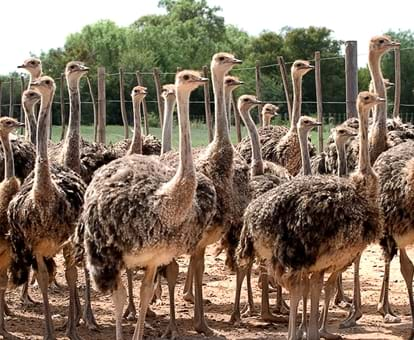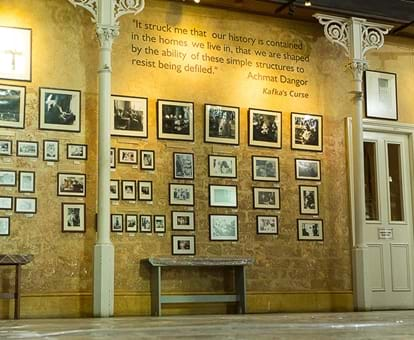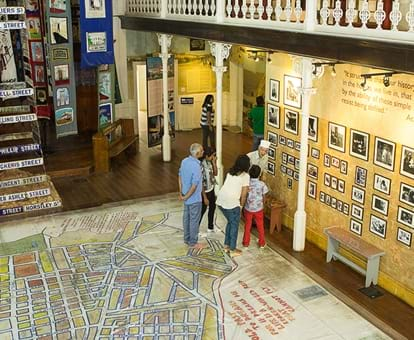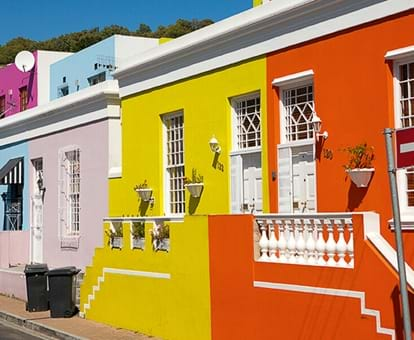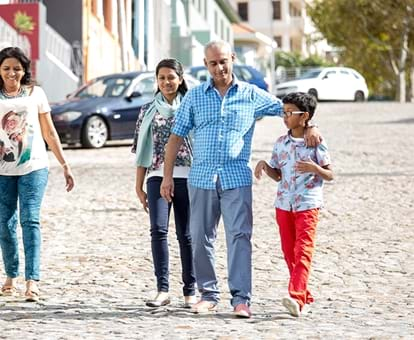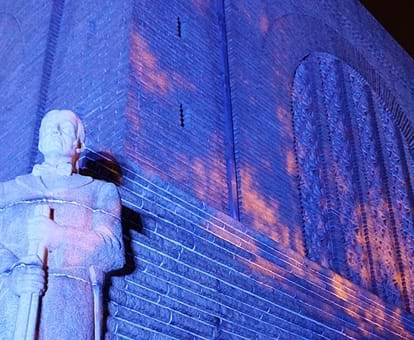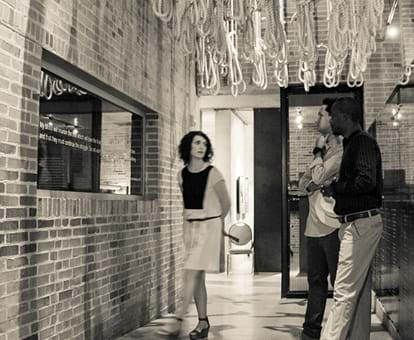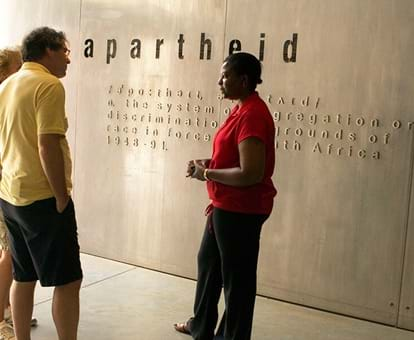By creating an account, I agree to the
Terms of service and Privacy policy
Choose your country and language:
Africa
Americas
Asia Pacific
Europe
TThe Afrikaans culture is as rich and diverse as the South African landscape. It is anchored in the language that developed at the most southern point in Africa with the arrival of Jan van Riebeeck from the Netherlands in 1652. The initial idea was possibly for Dutch and the European culture to seed and grow in South Africa, but it could not hold up against the strong influences of the local languages and those of the slaves who were imported to Cape Town. The result is a rich, manifold language and culture, with aspects borrowed, inherited and created from the Khoisan, and the slaves from places like the Far East, Portugal, Indonesia, Madagascar, Mozambique and Angola.
The arrival of other Europeans, like the French Huguenots and the British Settlers, had a further impact on the development of what we view today as the Afrikaans culture. During the initial development phases of Afrikaans, different varieties of the language took hold and grew, and with it different cultural aspects, for instance Kaaps and Griekwa-Afrikaans. There might be a perception that this is the language predominantly spoken by a white community in South Africa, but for a long time this has not been the case. Fewer than half of the Afrikaans mother-tongue speakers in South Africa are white.

TTo go to the very heart of the first written scripts in Afrikaans, one should visit the Bo-Kaap where the Muslim community worshipped in Arabic-Afrikaans long before the Bible was translated into Afrikaans. At the Bo-Kaap Museum you’ll get a view of the history and culture of this community and the Islam influence on Afrikaans and Afrikaans culture. Visit the area itself, with its characteristic colourful houses. Listen to the calls to prayer and have a taste of typical Afrikaans delicacies such as koeksisters (fried dough infused with syrup) and bobotie (spiced minced meat baked with an egg-based topping).
If you want to experience the rhythm of Afrikaans, listen to rappers like Hemelbesem and Snotkop. Or feel it when you attend a rieldans or Ikhapara - a dance form unique to the Nama people of the Northern Cape. It is one of the oldest dance forms in South Africa, characterised by a lot of fancy footwork and danced outdoors at such a pace that it results in a lot of dust - therefore giving life to the Afrikaans saying “hy dans dat die stof so staan”.
Whether you’re an overseas visitor or a local tourist you can experience the Afrikaans culture by visiting one of the many Afrikaans festivals hosted annually, showcasing the very best in art, lifestyle and entertainment. The Klein Karoo National Arts Festival is held in April in Oudsthoorn in the Western Cape. Combine your festival experience with a visit to Arbeidsgenot, the home of C.J. Langenhoven (1897-1932). Langenhoven was an influential Afrikaans poet who wrote Die Stem (The Call of South Africa), a poem that forms part of Nkosi Sikelel’ iAfrika, the national anthem. Oudtshoorn is situated on Route 62, one of the most popular tourist destinations in South Africa and a scenic alternative to the busy N2 highway, offering visitors easy access to wine farms, museums and smaller towns on the way to Cape Town.
IIf you want to experience contemporary Afrikaans music, the Innibos Lowveld National Arts Festival is the place to visit. Hosted in Nelspruit in Mpumalanga in June, it’s been one of the most visited and successful events on the Afrikaans calendar. It is close to the southern gates of the Kruger National Park where you can have a firsthand experience of one of the most important aspects of the Afrikaans culture: a true South African braai - meat cooked on open flames in the outdoors.
The Free State Arts Festival, held in Bloemfontein in July, offers an exquisite festival programme. It is hosted on the campus of the University of the Free State and if you want a taste of true Afrikaans cultural food, this is your opportunity. Feast on roosterkoek (fresh bread rolls grilled on a fire) or skilpadjies (traditionally lamb’s liver wrapped in the fatty membrane that surrounds the kidneys) and drink coffee sweetened with condensed milk. And while in Bloemfontein, make sure to visit the Women’s Monument, commemorating the suffering of some 27 000 Boer women and children who died in British concentration camps during the second Boer War. For true Free State hospitality on a working farm, book an overnight stay at De Oude Kraal Country Estate. It is a 6th generation Merino sheep farm and famous for its annual food festival in June, which is a celebration of venison and other delicacies.
The Aardklop Arts Festival in Potchefstroom usually has an impressive lineup of Afrikaans singers and performers, from classical to popular music, as well as plays, comedies and visual art.
While in Potchefstroom, visit the house of Jacob Daniël du Toit (1877-1953), better known as Totius. He was an Afrikaans poet and played a central role in the translation of the Bible in Afrikaans. Some of his poems were translated in English, for instance Skemering, translated by C.J.D. Harvey as “Night at Sea - Near Aden”:
Nothing but sea and darkness everywhere
as when the earth was desolate and void
and o'er the world-pool hung night, unalloyed
No star and no horizon visible,
no sight or sign the wandering eye to guide,
I hear only the waves beating the side.
Though she sails always on, she now sails blind,
the prow thrusts forward, cleaving through the night.
Only upon the compass, shafts of light.
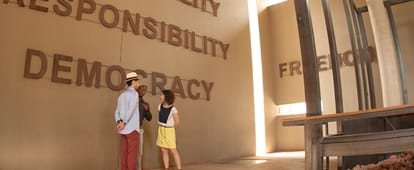
OOne of the most important happenings in the Afrikaans history is the Great Trek, the migration of early Afrikaans settlers who travelled by wagon from the Cape Colony to the interior of South Africa from 1836 onwards. The best place to experience this part of the Afrikaans history and culture is by visiting the Voortrekker Monument in Pretoria. Here you’ll not only get insight into the history and everyday living of the settlers, but the monument also hosts different exhibitions on other aspects of the Afrikaans culture and is home to an impressive art collection.
Afrikaans is an important part of the modern history of South Africa. The language became a political instrument and in June 1976, it led to one of the turning points in the struggle against apartheid. Visit the Apartheid Museum in Johannesburg, where there is a permanent exhibition dedicated to this event. Apart from the historical significance, this museum is also worthwhile visiting because of the architecture. It is an emotional experience, illustrating how things that can bind people together, like language, can also be used to divide the very same community.
Today, the Afrikaans community is striving towards inclusivity, not only embracing the different origins of this indigenous language but proudly playing its role in the broader South African community.

AAbout the author
Johanna van Eeden is a freelance writer and media consultant. She is a former editor-in-chief of Beeld, Die Burger and Volksblad and former editor and publisher of Netwerk24. She has more than 20 years of experience in the media industry. She has a degree in communication studies from the NWU, an honours degree in political science from Unisa and studied for a year at Harvard as a Nieman Fellow.
Related articles

